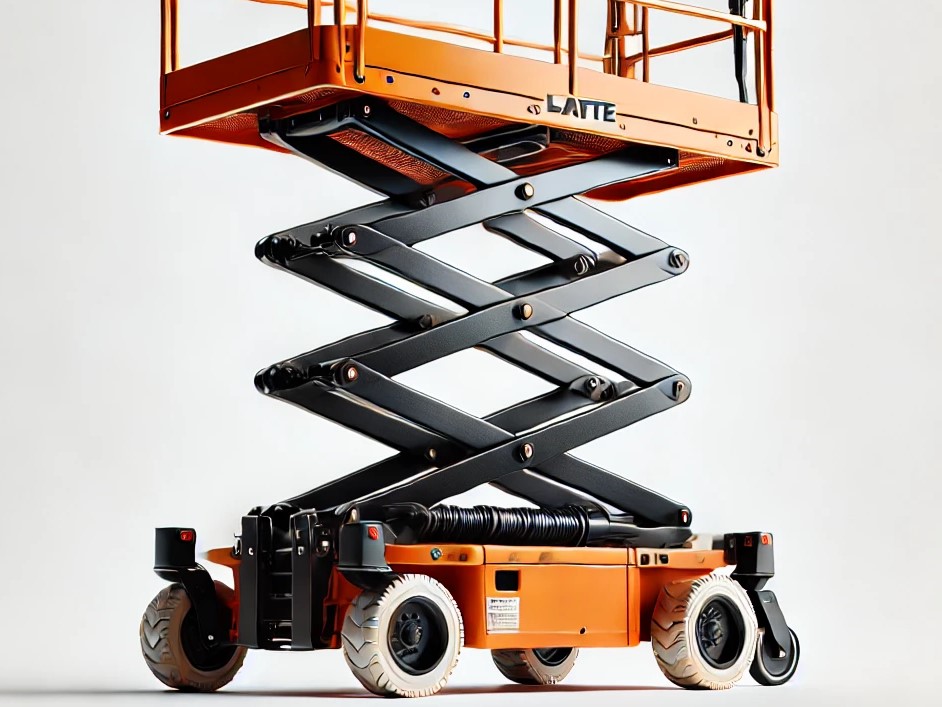Scissor Lifts: The Complete Guide to Vertical Access Solutions
Scissor lifts have revolutionized how industries approach vertical access challenges, offering stable and efficient solutions for various applications. These versatile platforms use a unique folding mechanism to extend vertically, providing safe and reliable elevation for workers and materials. Understanding their capabilities, types, and proper usage is essential for maximizing their benefits in construction, maintenance, and industrial settings.

Scissor lifts have revolutionized how workers access elevated areas across numerous industries. These mechanical platforms use a folding support mechanism arranged in a crisscross pattern that extends vertically when pressure is applied to the lowest set of supports. This unique design allows for stable vertical movement while maintaining a relatively compact footprint when retracted. From construction sites to maintenance operations, scissor lifts provide safer alternatives to traditional ladders and scaffolding while improving efficiency and productivity.
Benefits of Scissor Lifts for Stable Vertical Elevation
Scissor lifts offer several advantages over other elevation equipment. Their primary benefit lies in their exceptional stability, providing workers with a secure platform that minimizes wobbling or swaying during operation. This stability is crucial for precision work at height, such as electrical installations or detailed finishing. Additionally, scissor lifts typically feature larger work platforms than boom lifts, accommodating multiple workers and materials simultaneously.
The vertical-only movement of scissor lifts makes them particularly suitable for applications where straight-up access is needed without horizontal reach requirements. Many modern scissor lifts also include safety features like guardrails, non-slip surfaces, and emergency descent systems. For indoor operations, electric scissor lifts produce zero emissions, making them environmentally friendly options for enclosed spaces where air quality is a concern.
Different Types of Scissor Lifts and Their Applications
Scissor lifts come in several varieties, each designed for specific working environments and tasks. Rough terrain scissor lifts feature robust tires and powerful engines for outdoor construction sites and uneven surfaces. These models typically offer higher weight capacities and can navigate challenging ground conditions while maintaining stability during elevation.
Electric scissor lifts are ideal for indoor applications like warehouse inventory management, retail maintenance, and manufacturing facilities. Their quiet operation and absence of emissions make them suitable for environments where air quality and noise levels are concerns. Compact scissor lifts serve narrow aisles and confined spaces, offering maneuverability without sacrificing elevation capabilities.
Hydraulic scissor lifts utilize fluid power systems for heavy-duty applications requiring significant lifting power. Pneumatic models, powered by compressed air, are often used in specialized industrial settings where hydraulic fluid leakage would pose contamination risks. Some specialized scissor lifts include features like extendable platforms for additional reach or self-leveling capabilities for operation on slight inclines.
Key Specifications When Choosing a Scissor Lift
When selecting a scissor lift, several critical specifications should guide the decision-making process. Maximum platform height determines the vertical reach, with options ranging from 10 feet for basic indoor models to over 50 feet for specialized construction lifts. Working height, which adds approximately 6 feet to account for operator reach, provides a more practical measurement of actual access capabilities.
Weight capacity indicates the maximum load a scissor lift can safely elevate, including workers, tools, and materials. Platform dimensions affect workspace availability and should match project requirements. Power source options include electric (battery), diesel, hybrid, or propane systems, each with distinct advantages for different environments and operational durations.
Stowed dimensions and weight impact transportation logistics and access through doorways or elevators. Gradeability, measured as a percentage, indicates a lift’s ability to operate on sloped surfaces. For outdoor applications, wind rating becomes crucial, specifying the maximum wind speed at which the lift can safely operate. Additional considerations include lift speed, control systems, and available safety features like pothole protection and tilt sensors.
Proper Operation and Maintenance Requirements
Safe operation of scissor lifts begins with comprehensive operator training and certification. Operators must understand weight distribution principles, as uneven loading can create instability risks. Pre-operation inspections should verify functional safety systems, hydraulic components, and structural integrity before each use. Workplace assessment for overhead obstructions, ground conditions, and potential hazards represents another critical safety practice.
Maintenance schedules typically include daily visual inspections, weekly mechanical checks, and more comprehensive monthly and annual evaluations. Regular maintenance tasks involve lubricating moving parts, checking hydraulic fluid levels and quality, inspecting electrical systems, and examining structural components for signs of wear or damage. Battery maintenance for electric models includes proper charging procedures and regular water level checks for traditional lead-acid batteries.
Manufacturers recommend professional inspections annually or after significant operational hours thresholds. Documentation of all maintenance activities, repairs, and inspections helps ensure compliance with safety regulations and equipment warranty requirements. Proper storage in clean, dry environments when not in use extends equipment lifespan and maintains optimal performance.
Current Scissor Lift Technologies and Pricing
Modern scissor lifts incorporate advanced technologies that enhance safety, efficiency, and user experience. Self-diagnostic systems can identify potential issues before they cause operational problems. Telematics and fleet management software allow equipment managers to track usage patterns, maintenance needs, and location data remotely. Some models feature proportional controls for precise movement and positioning, while others offer automatic outrigger deployment for enhanced stability.
| Scissor Lift Type | Average Cost Range | Key Features |
|---|---|---|
| Electric Slab Scissor Lift (19-26 ft) | $10,000-$25,000 | Zero emissions, indoor use, quiet operation |
| Rough Terrain Scissor Lift (26-33 ft) | $25,000-$45,000 | All-terrain capability, higher capacity, diesel power |
| Compact Electric Scissor Lift (10-16 ft) | $8,000-$15,000 | Narrow width, lightweight, maneuverable |
| Large Platform Scissor Lift (33-50+ ft) | $40,000-$80,000+ | Extended reach, high capacity, stabilization systems |
Prices, rates, or cost estimates mentioned in this article are based on the latest available information but may change over time. Independent research is advised before making financial decisions.
Rental options provide flexibility for short-term projects, with daily rates ranging from $100-$200 for smaller electric models to $300-$600 for larger rough terrain units. Weekly and monthly rental agreements typically offer significant discounts compared to daily rates. Factors affecting purchase and rental costs include platform height, weight capacity, power source, and additional features like self-leveling capabilities or specialized attachments.
The total cost of ownership extends beyond initial purchase price to include maintenance expenses, operational costs (fuel or electricity), training, and eventual resale value. While electric models generally have higher upfront costs than comparable internal combustion options, their lower operational expenses and maintenance requirements often result in better long-term value for suitable applications.
Scissor lifts continue to evolve with innovations in battery technology extending runtime, smart systems improving safety monitoring, and hybrid power options offering versatility across different work environments. Understanding both current capabilities and emerging technologies helps organizations make informed decisions when investing in vertical access solutions for their specific operational needs.




